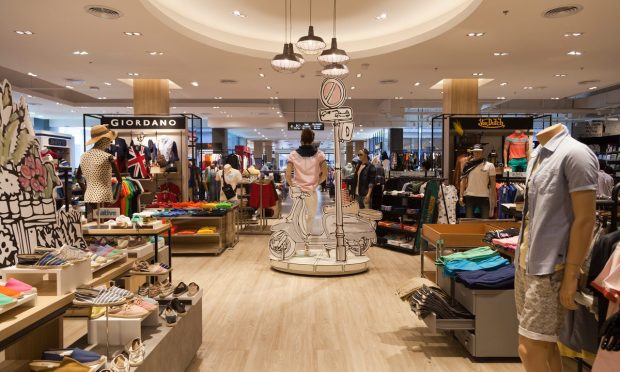To Compete With Amazon, Department Stores Need to Think Like a Marketplace

After years of decline, department stores are seeing a resurgence in traffic, with Mastercard SpendingPulse projecting they’ll see 40% year-over-year growth over the week of Thanksgiving, and 7.6% growth compared to the same period of 2019.
Although department stores are far from their glory days, Steve Sadove, former CEO of Saks Fifth Avenue and an adviser at Mastercard, told PYMNTS’ Karen Webster in an interview that this increased traffic provides an opportunity to reintroduce themselves, trying different models and ways of approaching consumers. But they’re now facing off against the likes of Walmart, Target and other retail giants that have been partnering with brands to create shops within shops akin to the ones department stores have featured for decades.
“What’s old is new again, and bringing back things like toys and electronics and categories that had been abandoned by some of the department stores is now in vogue,” Sadove said.
Macy’s, for example, has partnered with Toys R Us to bring merchandise to its website ahead of the holiday shopping season — and into more than 400 stores in 2022.
Read more: Macy’s Play With Toys R Us Could Be Building Blocks to Digital Marketplace
Sadove said this also points to a wider trend of retailers transforming into marketplaces that don’t own inventory and instead provide a platform that can dropship merchandise to consumers.
“It won’t surprise me to start seeing concessions online, which is no different than an affiliate type of model,” he said. “Brands will now say, ‘Where [and] who do I want to affiliate with? What kind of environment do I want?’”
That trend, Sadove told Webster, is likely to continue throughout 2022 — as is consumers’ desire for newness and self-expression, not just in apparel but across all categories.
“The pandemic sparked a lot of trends across categories where you’re going to see some fresh thinking,” he said.
A Strong Consumer
Earlier this week, Mastercard projected that retail sales will jump 10% during the week of Thanksgiving compared to the same period last year and increase by over 12% on a two-year stack. Digital sales alone are expected to rise 7% year over year, and 50% compared to 2019.
See more: Shopping Frenzy Expected Thanksgiving Week as People Hunt Deals, Inventory
And the Commerce Department said retail and food services sales grew 1.7% in October as consumers got a head start on holiday shopping amid supply chain bottlenecks that are causing product shortages and contributing to a 6% inflation rate, the highest level since November 1990.
Read more: October Retail Sales Beat Forecasts as Shoppers Get a Jump on the Holidays
October retail sales numbers are particularly noteworthy, Sadove said, as they lap last year’s Amazon Prime Day and other promotions that retailers rolled out prior to Halloween.
“The underlying consumer continues to be strong,” he said. “Obviously, you’ve got all the supply chain and labor and margin issues that are out there, but if you look at how’s the consumer feeling today, they’re healthy.”
Sadove said he feels “very strongly” that demand isn’t going to fall apart in the next few weeks, remaining strong through at least the end of the calendar year, even as people finish their holiday shopping early or can’t find the hot toys, electronics or apparel this year.
PYMNTS research, conducted in collaboration with Kount, showed that 48% of consumers plan to begin their holiday shopping before Thanksgiving, and 25% plan to begin on Black Friday, meaning that nearly three-quarters of consumers will be looking for gifts within the next week.
See also: Nearly 90% of US Consumers Plan Online Holiday Purchases in 2021 — 13% More Than in 2020
“There’s clearly a ‘buy now’ mentality as opposed to waiting out the retailer, getting that 60% off at the end of the season,” Sadove said. “You’re not going to see nearly as much of that.”
Low inventories may also mean more gift card purchases, he added, which could dampen sales figures in the near term as retailers don’t record gift cards as a sale until they’re used. Still, Sadove said he’s “very comfortable” with how the next six weeks are going to play out.
The bigger question, he said, is what next year holds as retailers lap the government support programs rolled out amid the pandemic, questions about consumer confidence rise and inflation pushes prices higher.
“I do think … it leads to a little bit more uncertainty as you go into next year,” Sadove said.
Still, he said brands will likely come out the other side of this pandemic period stronger, just as those that survived the last recession did.
“It’s how they evolve themselves, though,” he said.
